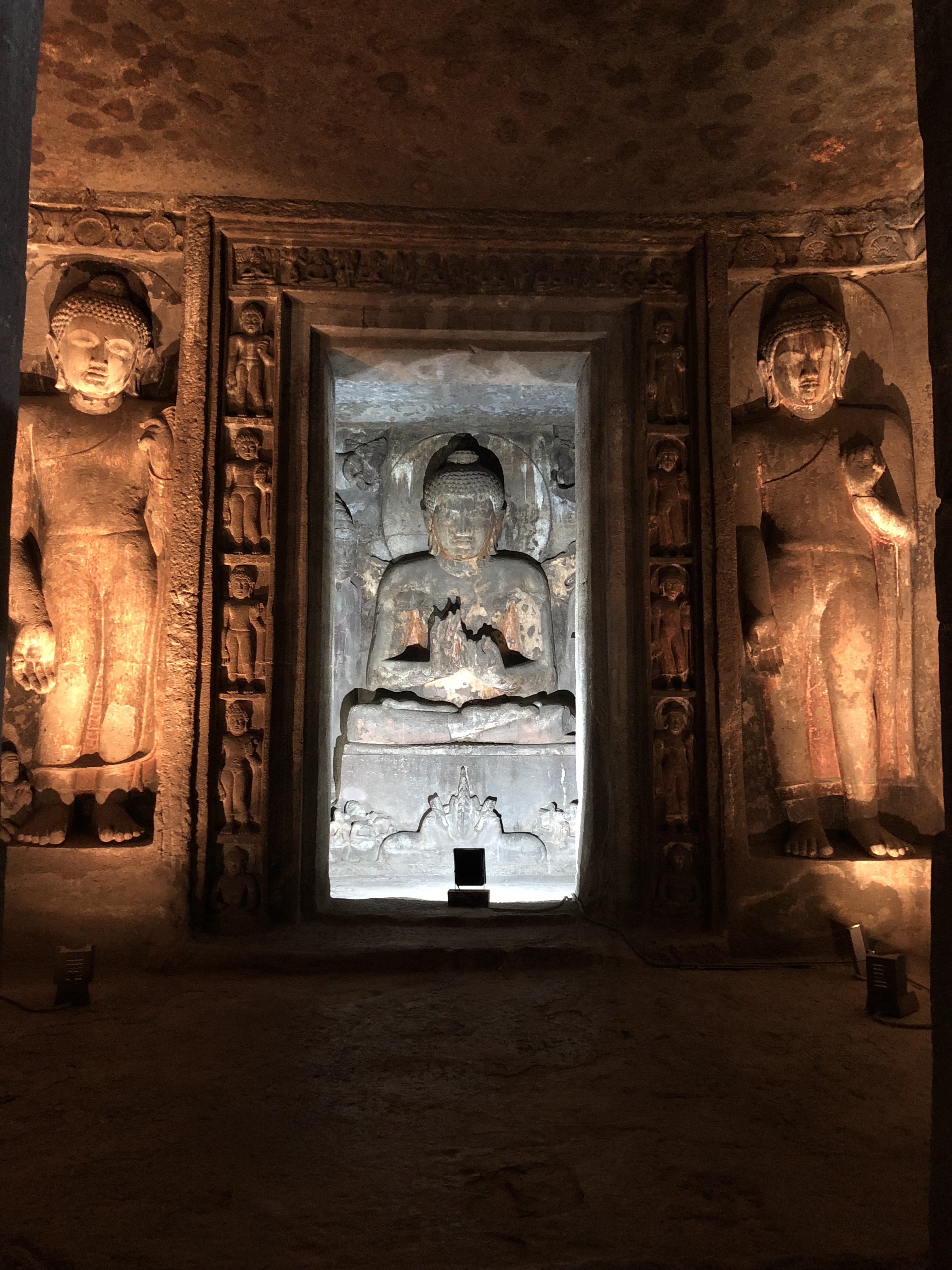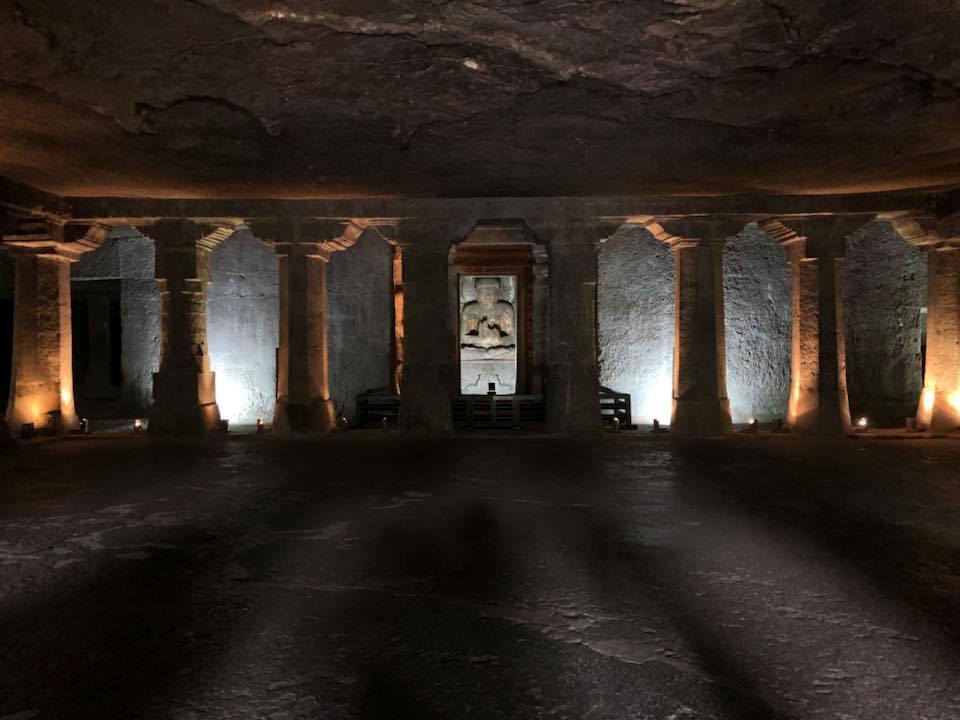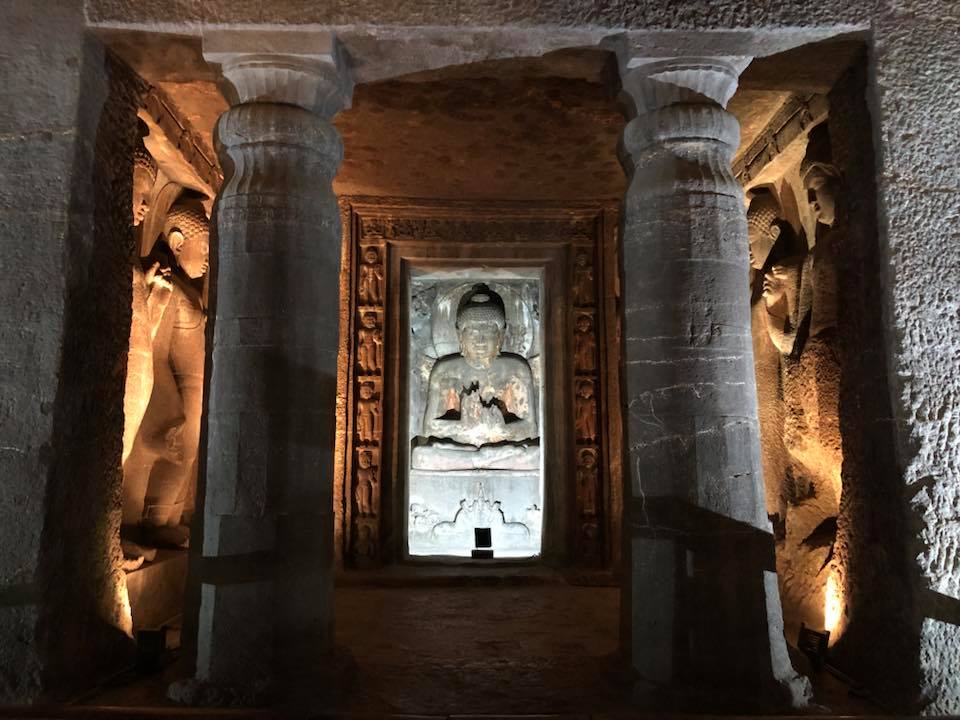Of the many caves I visited at the Ajanta Caves complex, I felt myself encountering a particularly acute sense of timeless sacrality at Cave 4, one of the earliest cave monasteries. I think it was the vast main chamber that drew me in like a little child, as if I were in the presence of something, someone much older and wiser. I wanted to sit down and simply listen to the pulse of the vihara, the silent whispers from the cracks of stone and worn paints.
The outer cloister is delineated by ancient pillars with intricate floral, naturalistic, and symbolic patterns that art historians and archeologists cannot account for. While I can’t say for certain, it would seem that the gallery was for allowing for circumambulation by the congregation. Beyond the cloister are chapels that probably were intended for individual meditators. How might have a day unfolded here? Was there a schedule for rituals and celebrants? How many? How often, apart from the ancient Patimokkha recitation that would have been convened every fortnight?
Perhaps devotees of the time would have walked circles around a holy object or relic that could have been brought into the centre of the hall. Perhaps they sat in tranquil meditation, sheltered from the sweltering heat and humidity that would have been worsened by large crowds of congregants.
Finally, at the far end of the hall, we come to the majestic shrine and altar of the Buddha, flanked by twelve Buddhas (eight small images, four huge ones) in a layout that would inspire the shrine aesthetics of caves in Dunhuang, China. It is no wonder that the Archaeological Survey of India theorizes that this cave is a “Mahayana” cave, since the Buddha images seem to indicate a belief in enlightened beings as co-existing in the same eon, not just on different worlds.

One Buddha for each world-system. One Buddha for each epoch. All Buddhas in all universes, all Buddhas in all periods. Was this perhaps what the artisans and stonemasons of this particular cave wanted to tell us?


